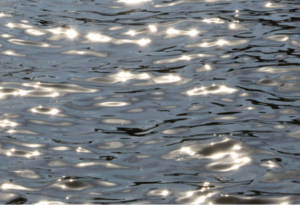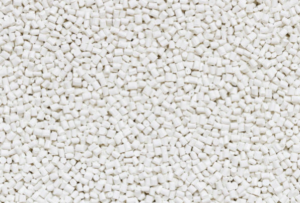Hidden Hazards

A picturesque lake, with its crystal-clear waters reflecting the blue skies and lush landscapes, is a sight to behold. Many lakes are enhanced with synthetic dyes to achieve vibrant and enticing colors. These dyes can transform a natural body of water into an idyllic scene, often seen in parks and golf courses. However, behind the beauty of these artificial hues, there are important safety questions that demand our attention. In this blog, we will explore the use of synthetic lake dyes, their potential environmental and health hazards, and the importance of finding a balance between aesthetics and ecological responsibility.
The Aesthetic Appeal of Synthetic Lake Dyes
Synthetic lake dyes have been used for years to enhance the visual appeal of bodies of water, particularly in man-made or recreational settings. These dyes come in various shades, including blues, greens, and even shades of pink, and are utilized for multiple reasons:
- Aesthetic Enhancement: Synthetic lake dyes are primarily employed to enhance the visual appeal of water bodies, particularly in artificial or recreational settings. Lakes and ponds that might have appeared dull, murky, or uninviting are revitalized by the introduction of vibrant colors. The transformation is almost immediate, turning a previously unremarkable body of water into a focal point of beauty.
- Dye Variety: Synthetic lake dyes are available in an array of shades, from tranquil blues and vibrant greens to soft pinks and other captivating hues. This variety allows for customization to suit the specific aesthetic preferences of an area. The choice of dye color can have a significant impact on the overall ambiance and visual impression of a space.
- Reflection and Scenery: The beauty of a lake or pond is further accentuated when its waters reflect the surrounding landscape, creating a picturesque scene. The reflective properties of the water are often more pronounced when it is dyed, as the vibrant colors make for a striking contrast with the natural environment.
- Recreational and Commercial Appeal: Beyond their aesthetic appeal, synthetic dyes are used to improve the recreational and commercial potential of water bodies. For example, golf courses often use dyed ponds as water hazards, which not only adds to the challenge of the game but also enhances the visual allure of the course. Similarly, commercial establishments like hotels and resorts employ dyes to create visually pleasing water features that attract visitors and enhance the overall guest experience.
- Custom Branding: Some organizations and businesses utilize lake dyes to align their water features with their branding or identity. The ability to match the color scheme of a resort, theme park, or event venue with the waterscape adds a unique and cohesive touch to the overall design.
- Pest Control and Water Clarity: In addition to their aesthetic value, some synthetic lake dyes are formulated to serve practical purposes. These dyes often contain additives that help control pests such as mosquitoes or inhibit the growth of undesirable aquatic plants and algae. By blocking sunlight, these dyes reduce the availability of light for photosynthesis, effectively limiting the proliferation of unwanted organisms. This, in turn, enhances water clarity and contributes to the overall appeal of the lake.
- Temperature Regulation: In cooler climates, darker dyes can absorb more sunlight, leading to an increase in water temperature. This can be especially useful in situations where the water needs to remain unfrozen for recreational or aesthetic purposes during colder months.

Environmental Concerns Surrounding Synthetic Lake Dyes
Synthetic lake dyes can introduce a range of environmental hazards, including:
- Disruption of Aquatic Ecosystems: One of the primary environmental concerns associated with synthetic lake dyes is their potential to disrupt aquatic ecosystems. By blocking sunlight, these dyes limit the growth of aquatic plants and algae. While this can improve water clarity, it can also disrupt the delicate balance of the ecosystem. Aquatic plants serve as crucial habitats for various aquatic species and act as oxygen producers. When their growth is hindered, it can impact the entire food web of the water body, affecting fish and other wildlife that rely on these plants as a food source. Over time, such disruptions can lead to imbalances and reduced biodiversity within the ecosystem.
- Harmful Algal Blooms: Paradoxically, some synthetic dyes, particularly those designed for controlling algae, might inadvertently lead to the development of harmful algal blooms. These blooms can contain toxic species of algae that produce harmful compounds and pose serious threats to aquatic life. Toxic algal blooms can lead to fish kills, contaminate water sources, and pose health risks to humans and animals that come into contact with the water.
- Water Contamination: Synthetic lake dyes can leach into the surrounding environment, potentially contaminating groundwater and affecting neighboring ecosystems. This contamination can have cascading effects on the health of local flora and fauna, particularly in cases where dye compounds are persistent and do not easily break down in the environment. The impact of water contamination reaches beyond the immediate vicinity of the dyed lake, potentially spreading into larger water bodies or affecting the quality of nearby drinking water sources.
- Impact on Water Quality: The introduction of synthetic lake dyes can alter the chemical composition of the lake or pond. This alteration can lead to imbalances in the aquatic food web and nutrient cycling. For instance, if synthetic dyes disrupt the growth of certain types of algae and plants, it can lead to increased nutrient levels in the water, potentially triggering algae overgrowth or other water quality issues. Such imbalances can impact the overall health of the aquatic ecosystem and potentially lead to long-term ecological consequences.
- Unknown Long-Term Effects: Perhaps one of the most significant concerns surrounding synthetic lake dyes is the uncertainty about their long-term effects on aquatic ecosystems. While they can provide immediate aesthetic benefits, the cumulative impact on ecosystems over time remains relatively unknown. Scientific research into the long-term consequences of synthetic dye use is limited, making it difficult to fully understand the extent of potential harm.
In addition to environmental hazards, there are potential human health concerns associated with synthetic lake dyes:
- Skin Irritation: Swimming in dyed lakes may lead to skin irritation or allergic reactions, particularly in individuals with sensitive skin.
- Respiratory Issues: Inhaling aerosolized dye particles from water activities could potentially cause respiratory discomfort or exacerbate existing respiratory conditions.
- Ingestion Risk: Swallowing water from dyed lakes may lead to ingestion of dye particles, which could cause gastrointestinal distress.

Regulatory Measures and Guidelines
In response to the environmental and health concerns associated with synthetic lake dyes, various regulatory measures and guidelines have been established to ensure responsible usage and minimize the potential risks. These regulations can vary by region and are typically implemented at local, state, or national levels. Here are some key aspects of regulatory measures and guidelines related to synthetic lake dyes:
- Environmental Impact Assessments: Certain jurisdictions require thorough environmental impact assessments (EIAs) before permitting the use of synthetic dyes in bodies of water. These assessments evaluate the potential ecological consequences and health risks associated with dye application. EIAs may include studies on water quality, aquatic biodiversity, and the effects of dye compounds on ecosystems.
- Dye Concentration Limits: Regulations often specify maximum allowable concentrations of synthetic dyes. These limits are established to ensure that the application of dyes does not exceed levels that could harm aquatic life or water quality. Exceeding these limits may result in legal consequences or the need to undertake remediation efforts.
- Banned Substances: In some regions, certain synthetic dyes or dye additives have been banned due to their known ecological or health hazards. Banned substances are typically excluded from legal usage to prevent potential harm to the environment and public health.
- Best Practices Guidelines: Regulatory agencies often provide best practice guidelines for the responsible use of synthetic dyes. These guidelines may include recommendations for the timing and frequency of dye applications, appropriate concentrations, and the avoidance of certain chemical additives that could pose environmental risks. These guidelines aim to assist users in minimizing the negative consequences of dye use.
- Education and Training: Regulatory bodies may require individuals or organizations planning to use synthetic dyes to undergo training or education on responsible dye application. This training ensures that those applying dyes are aware of the potential hazards and how to mitigate them.
- Reporting and Monitoring: Regulations may mandate reporting and monitoring of dye application and its effects. This may include the submission of usage plans, water quality monitoring, and the reporting of any observed environmental impacts or adverse events resulting from dye application.
- Public Awareness and Notification: In some areas, there is an emphasis on public awareness and notification regarding dye application in lakes or ponds. This ensures that nearby residents and recreational users are informed about the use of synthetic dyes, the reasons for their application, and any potential health or safety precautions they should take.
- Compliance and Enforcement: Regulatory bodies have mechanisms for ensuring compliance with established guidelines and regulations. Non-compliance may result in fines, legal action, or the suspension of dye application privileges. Enforcement mechanisms are essential for maintaining ecological responsibility.

A Need for Ecological Responsibility
The aesthetic appeal of vibrant, artificially colored lakes is undeniable, but it’s crucial to approach such enhancements with a sense of ecological responsibility. Here are some key considerations:
1. Prioritize Natural Solutions
Before opting for synthetic dyes, consider natural solutions for managing water quality and aesthetics. This may include plant-based filtration systems, aeration, or carefully selected aquatic plants.
2. Strict Regulatory Compliance
When synthetic dyes are deemed necessary, it’s essential to adhere to local regulations and guidelines. Compliance ensures that dyes are used responsibly and in a way that minimizes harm to the environment and public health.
3. Continuous Monitoring
Regular monitoring of water quality, aquatic life, and the overall health of the ecosystem is critical. Early detection of issues can lead to timely interventions.
4. Public Awareness
Educate the public about the use of synthetic lake dyes, their potential hazards, and the importance of responsible management. Awareness can lead to more informed decision-making.
5. Sustainable Alternatives
Investigate sustainable alternatives, such as the use of native aquatic plants, that can naturally enhance water quality and aesthetics while preserving the local ecosystem.
The allure of vibrant, artificially colored lakes is undeniable, but beneath their picturesque surface lie complex environmental and health concerns. Synthetic lake dyes can disrupt aquatic ecosystems, potentially harm human health, and compromise water quality. To strike a balance between aesthetics and ecological responsibility, it’s crucial to prioritize natural solutions, adhere to regulations, monitor lake health, raise public awareness, and explore sustainable alternatives. Ultimately, the goal is to preserve the beauty of our water bodies while safeguarding the delicate balance of the ecosystems they host.

